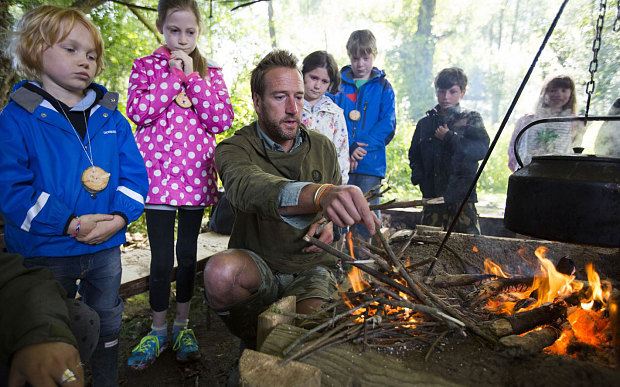While you are stewing inside with cabin fever, you are probably dreaming of spring and imagining getting your hands in the garden soil. There is no need to wait. You can find plenty of things to do in your garden during the winter months, and doing so will help you get over the funk that tends to set in at this time of year. Get your kids involved too, and turn it into a winter activity for the whole family. If you are all getting irritable and ready to snap at each other, it’s time to get outside!
Some of these winter gardening activities will not apply to you. It depends on your location, climate, and growing season. Take the activities that work with your garden and run with them.
Mulch.
Many people save mulching for the spring for the return of greenery. Your garden, though, can benefit greatly from getting mulched in the winter. Mulch helps to keep the temperature of your garden soil more constant. Without mulch, it tends to freeze and thaw quickly, which disrupts the roots of your overwintering plants. The mulch can also help to protect your less hardy winter plants from frosts. Surround the bases of your overwintering plants with mulch to keep them warm.
Clean and compost.
Your compost pile will certainly slow down over the winter, but it will not come to a complete stop. Clean up the dead plant material in your garden and flowerbeds and use it to feed your compost pile. You should have plenty of compost ready for when your garden awakens in the spring. The cleanup will also help to reduce the number of pests you see in the spring. Some, like harlequin and squash bugs, overwinter in plant debris. Get rid of the debris, and you destroy the insects. Winter also provides you a great opportunity to tackle those overlooked portions of your garden. If you have been too busy in previous growing seasons to clean up and make use of certain corners of your space, now is the time to clean it out.
Cultivate.
As winter draws to an end, you can start preparing the soil for your spring plantings. Cultivate the soil by mixing it up with compost. Stir up the soil every few days to allow birds to peck through it. They will eat many of the insect larvae that would otherwise be destructive to your garden in the spring.
Improve your soil.
In areas of your garden that will not be planted immediately in the spring, you can do some work to prepare the soil. Your warm weather plants, like corn and tomatoes, will not go into the ground for several weeks yet. Plant some winter cover crops in these spots to improve the condition of your soil. Crops such as Austrian winter peas, crimson clover, or hairy vetch are winter crops that take in energy from the sun and release it into the soil in the form of nutritious organic matter. By planting these winter crops, you will have a better harvest in the summer and fall. Cut your winter crops down when it is time to grow vegetables there.
Build a greenhouse.
If you have been toying with the idea of starting a greenhouse garden, there is no time like the present. With a greenhouse, you can grow greater quantities and varieties of food. Although you can still grow vegetables in the winter without one, you have more options by using a greenhouse. You can have plentiful fresh fruits and vegetables year round. You can even grow tropical plants. Building a greenhouse is not very difficult. You need to track down the right materials and some plans or a more experienced helper. Planning and building a greenhouse could be a great learning activity for your children. There are many math lessons as well as practical and useful skills to be learned by building a structure.
Visit nurseries, arboretums, and greenhouses.
As the winter drags on and seasonal affective disorder sets in, you and everyone else in your house are probably getting pretty glum. When actually working out in the cold fails to cheer everybody up, it’s time for a field trip. If you have a nursery or commercial greenhouse nearby, you can get lost in the warmth and humidity and look for inspiration for your spring and summer gardens. Look at plants you have yet to try and maybe even buy a few. Arboretums or nature parks are other good places to visit in the winter as they often have greenhouses. Some may even have birds and butterflies to enjoy and help you dream of warmer months.
Plan your garden.
Chances are if you are reading this, you already have a garden. But if you don’t or if you would like to expand and improve your current garden, now is a great time to plan. Visit local greenhouses for inspiration, but also do research and planning online and with books. Turn this into a homeschooling lesson by finding books about creating gardens. Let your children help you plan. They can create a map, picture, or diagram of the future garden, which makes a great math and art lesson. Have your children who are old enough to do so head outside to make measurements. They can then make a scale drawing to practice their math and measuring skills.
Start an indoor garden.
Even if you are not planning to build a greenhouse, you can still grow plants in the house on a smaller scale. You can set up an area in the basement with growing lights and plant benches or just find a few sunny windows to put a couple of pots. Herbs are great for indoor gardening. They are easy to grow and having fresh flavoring year round is great in the kitchen.
Fresh Heirloom Seeds Directly From Fiercely Independent Farmers
Start seeds.
Many vegetables for your garden can be directly planted outdoors, but starting the seeds inside is a fun and educational activity. Get the kids involved for yet another lesson opportunity. Preparing seeds for sprouting and watching them grow is an invaluable biology lesson. Some plants that do well when started inside include cucumber, melons, zucchini, squash, tomatoes, Brussels sprouts, lettuce, cabbage, broccoli, spinach, cauliflower, and nearly any herb.
Winter can be tough to get through, but without it we wouldn’t appreciate spring quite so much. Make the most of your winter months by working on the garden and teaching your children practical and academic lessons.










